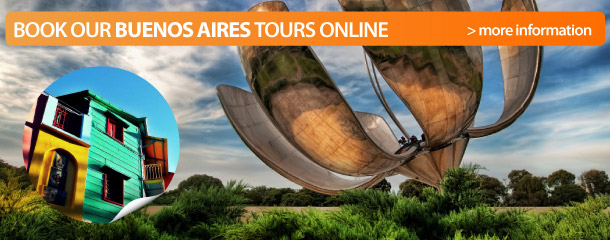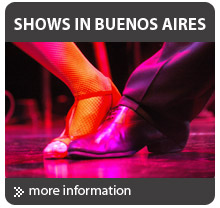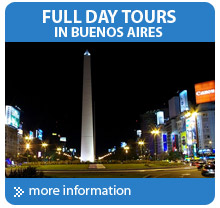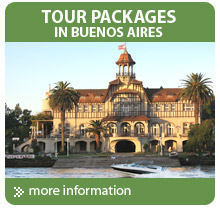Buenos Aires tourism, Tourist Attractions in Bs As Argentina
The capital of Argentina has a number of streets that are distinguished by their heritage, their shopping tours, their embassies or their abundant cinemas, libraries and theaters. In this article we tell you what the 10 most emblematic streets of Buenos Aires are:
1 – One of the most famous avenues is the 9 de Julio, considered among the widest in the world. It is an artery between Avenues San Juan and Santa Fe that invites to walk by wide roads and forested boulevards.
2 – Among the most visited by tourists is the Avenida de Mayo. It offers traditional cafes like Los 36 billares and Tortoni, shops, and institutional buildings, such as the Cabildo, Buenos Aires Government Palace, the House of Culture (former newspaper La Prensa) and the Palacio Barolo, the highest in the city until 1935, and inspired by the Divine Comedy by Dante Alighieri.
3 – The most luxurious street of Buenos Aires is Alvear Avenue. Over seven streets exhibit international and local brands of leather and jewelry. Among Recoleta and Retiro, home to numerous palaces and mansions, many of which became embassies, hotels and elite clubs. Among the prominent buildings we can find in that luxurious avenue are the Alvear Palace Hotel and the Promenade Gallery.
4 – Another must-see is the Avenida Del Libertador, which extends over 30 kilometers, on the banks of the Rio de La Plata, from Retiro to the locality of Tigre. The itinerary includes a visit to Palermo Woods, the Hippodrome and the Monument to the Spanish, among many other cultural attractions, recreational and sports. Also in this Avenue are very surprising the mansions and high rise apartment of Argentine celebrities.
5 – Florida Street is undoubtedly the most famous shopping street in Argentina, for its variety and quality of shops, bookstores, cafes, galleries, outdoor entertainment and street vendors. Among the highlights we can mention traditional buildings Galerias Pacifico, a place where local people have meeting and there is masterpieces in the roof and you can buy the most top brands. In the Florida street you can also visit the Borges Cultural Center, and the store Harrod’s, since 1914, the first American branch of the London store.
6 – Another shopping mecca is Murillo Street-between 500 and 700 – in the neighborhood of Villa Crespo, where more than 50 shops and factories devoted exclusively to the design and sewing of leather products.
7 – The Boedo Avenue, within the homonymous district is one of the most arrabaleras Avenues of Buenos Aires for its traditional bars where musicians and composers of the stature of Homero Manzi and Osvaldo Pugliese used to share a coffee. The itinerary includes the Esquina Dos Mundos Restaurant, the Bar Delu; Alenjo the Café Margot, recognized by the “Picadas” (snak) with cider or beer, Pan y Arte, Confectionery Trianon;, Osvaldo Pugliese’s Corner, and the corner of San Juan and Boedo, declared a National Historic Site and immortalized in the lyrics of the tango “Sur”.
8 – Corrientes Street is the hub of the bohemian nightlife of Buenos Aires, where it is concentrated most cinemas and theaters, as well as traditional restaurants and bookstores where are LPs and ancient text edits. One of the most famous is the corner of Avenida 9 de Julio, where stands the Obelisk, one of the main local icons. This is the “street that never sleeps” with faces that varied according to neighborhood intersection.
9 – The Defense street in San Telmo, is dotted with places specializing in antiques, designer goods and craft stalls. In every corner abound also the gastronomic, colonial buildings, churches and historic houses. Views captive: the Plaza Dorrego, San Telmo Market and Parque Lezama.
10 – Finally, Caminito Street, one of the symbols of La Boca, is known for its varied colors and tenements. For years turned into pedestrian offers tango shows numerous outdoor samples artists.







